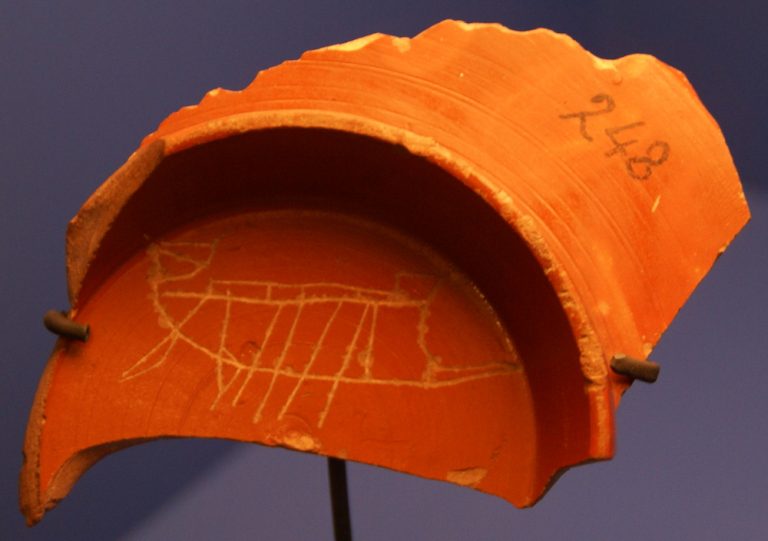Ancient Warfare at the museum - 10
The collection of the Amsterdam Allard Pierson Museum may be modest compared to the National Museum of Archaeology, and it is not as glamorous (...) as some other museums in the Netherlands' capital. For the ancients buff, however, it is very much worth a visit. It is, for instance, not every day you can see a Ptolemaic shield relief mould.
The graffito pictured with this blog may be my favourite item I've ever seen in this museum though (note: it doesn't actually seem to be part of the museum's collection). Not having seen the excavation report, I can't say if the depiction was scratched into the bowl before or after it was shattered. It fits so well, it's probably the latter. However that may be, the naive, scratched depicted of a warship seems compositionally pleasing against what it left of the bowl. Or maybe I just have a soft spot for depictions of warships. I resemble that remark...
The shard was found in Vechten, the Netherlands, site of the former Roman fort of Fectio, along a branch of the lower Rhine that started to silt up during the 2nd century. Before that, the fort saw at least regular visits from ships. The trierarchus Gaius Julius Bio set up an altar to Jupiter here in the first half of the first century, and the first Roman ship north of the Alps was found at Vechten. That discovery was made in the late 19th century and though the excavation was, by the standards of the time, exemplary, the wreck suffered water damage. Drawings and measurements aren't entirely reliable, but it seems to have been a ship similar to Oberstimm 1, a 20-man galley.
The ship depicted on the pottery is probably meant to look like a bigger style warship. It shows similarities with the ships seen on tombstones in Cologne, or ships depicted on mosaics or even Trajan's column. It's probably unwise to try and pin its type down further than liburna (which by the early imperial period quickly becomes a catch-all for 'warship' anyway). Instead, I'll just enjoy the picture some more and try to imagine Roman warships sailing down the Rhine; just a bit smaller than modern barges and initially unimaginably more strange to the area's inhabitants at the time.
